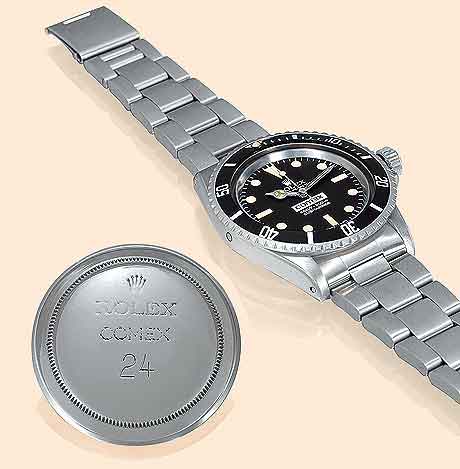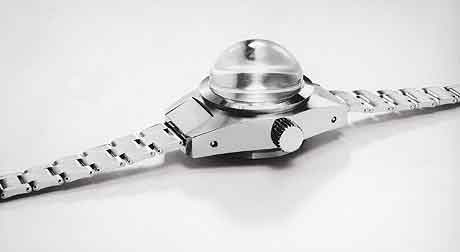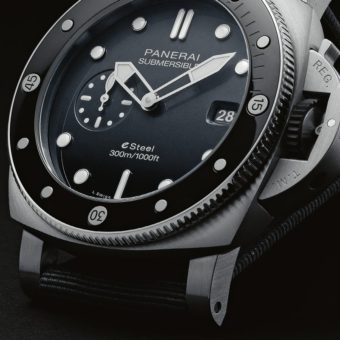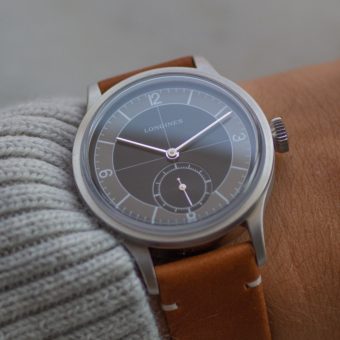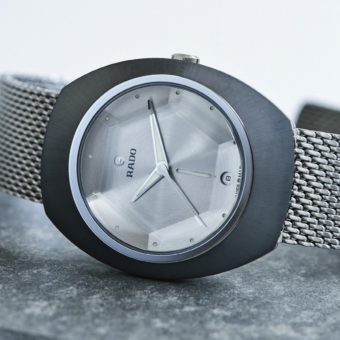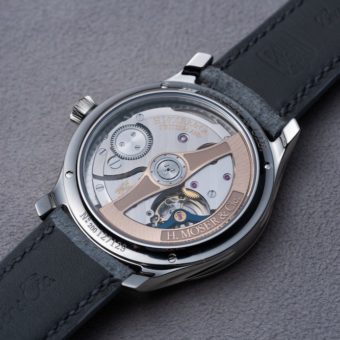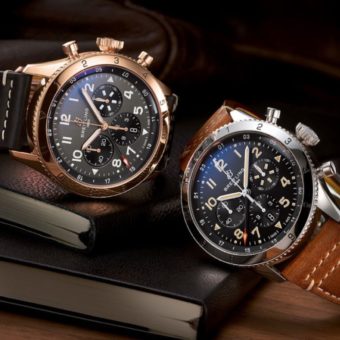 Rolex released a new version of its Submariner Date watch in 2010, in a steel case with a ceramic bezel. We test that watch in our March-April issue, on newsstands now. But did you know that the Rolex Submariner has been around for almost 60 years, and has been worn not only by professional divers but also by such luminaries as Steve McQueen, Fidel Castro, and Sean Connery (as James Bond)? Click below for our in-depth history of this popular diver’s watch.
Rolex released a new version of its Submariner Date watch in 2010, in a steel case with a ceramic bezel. We test that watch in our March-April issue, on newsstands now. But did you know that the Rolex Submariner has been around for almost 60 years, and has been worn not only by professional divers but also by such luminaries as Steve McQueen, Fidel Castro, and Sean Connery (as James Bond)? Click below for our in-depth history of this popular diver’s watch.
The story of the Submariner, launched in 1953, really begins in 1926, when Rolex introduced its now-famous water-resistant Oyster case. Thanks largely to its threaded back and screw-down crown, the case provided a degree of impermeability no watch company had achieved before. The Oyster became even less vulnerable to water and dirt in the early 1930s, when Rolex began incorporating its new, self-winding rotor mechanism. (Rolex dubbed its self-winding watches “Perpetual.”) Not having to wind the watch manually meant that the crown needed to be unscrewed only occasionally for setting. Rolex had discovered with its first manual-wind Oyster watches that failing to screw the crown down after winding rendered the supposedly water-resistant watch vulnerable to water and dust entering the case through the crown hole.
As the 1930s progressed, Rolex began to develop watches made specifically for use under water. (The early Oyster and Oyster Perpetual were not thought of as watches for swimming; the point of their impermeable cases was to protect the movement from dirt and accidental exposure to moisture.) The Rolex catalog from 1935 shows a 47-mm wristwatch, Ref. 2533, which has a cushion-shaped Oyster case and a pocketwatch manual-wind movement from Lépine, with a small-seconds display at 9 o’clock. At the time, though, the watch was simply too large for prevailing tastes, and was not a commercial success.
But it was a harbinger of a now well-known dive-watch collaboration that paired Rolex with the Italian company Panerai, which at the time supplied underwater equipment to the Italian Navy. In the mid-1930s, the Navy asked Panerai to supply it with dive watches. Because Panerai had no watchmaking capacity of its own, it turned to Rolex, which sent it watches with Oyster cases and movements made from ébauches from the Swiss watch and movement maker Cortébert. Panerai delivered its first dive-watch prototype to the Italian Navy in 1936, and the company continued to use Rolex-supplied movements into the 1950s. The partnership with Panerai gave Rolex important experience in the manufacturing of dive watches.
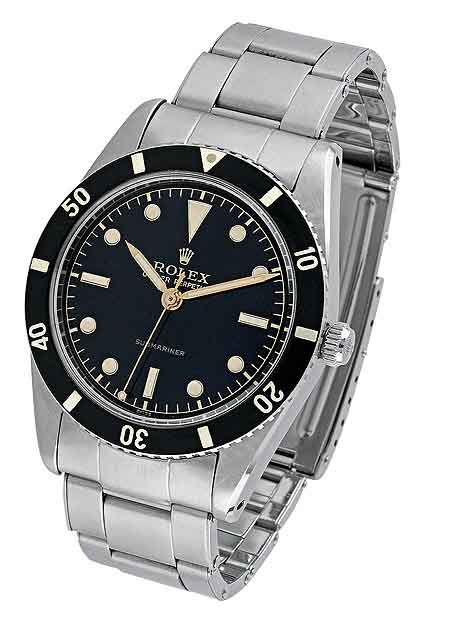
In the early 1950s, Rolex decided to make its own, bona fide dive watch. The idea came from a Rolex director and marketing executive named René-Paul Jeanneret, who was a diving enthusiast and friend of Jacques-Yves Cousteau. Thanks to his hobby, Jeanneret was aware of the technical and design requirements for a dive watch. He persuaded Hans Wilsdorf, who half a century after founding Rolex was still at the company’s helm, to initiate a professional divers’-watch project.
In 1953, Rolex made a spectacular move. That September, Swiss scientist Auguste Piccard, in the submersible vessel Bathyscaphe FNRS-2, descended an amazing 3,131.8 meters into the ocean. Wilsdorf, a marketing genius, had seen to it that a specially developed Rolex, equipped with a strikingly luminous dial and prominent Rolex logo, was affixed to the vessel’s hull. When the submarine rose out of the water, the timepiece emerged unaffected by the dive and was ticking normally.
That same year, Rolex introduced the first Submariner. It was water resistant to 100 meters, but Rolex soon increased these specs to 180 meters. The watch had a matte, black dial, large luminous markers and luminous hands for the hours, minutes and seconds. It also had a knurled rotating bezel with clear markings in five-minute increments and an arrow-shaped zero marker with a luminous dot pointing toward the center. Rolex described it as “The Diver’s Friend.”
The earliest Submariners did not have the white Submariner name on their dials. It appeared only at the end of 1954. Nor did they have the signature crown guard − the two “shoulders” on the right side of the case.
In collectors’ circles some early Submariner models are known as “James Bonds.” And for good reason: in the first four James Bond films, Agent 007 relied on Rolex watches, as he did in the novels by Ian Fleming. The watches bore the reference numbers 6200, 6538 and 5510.
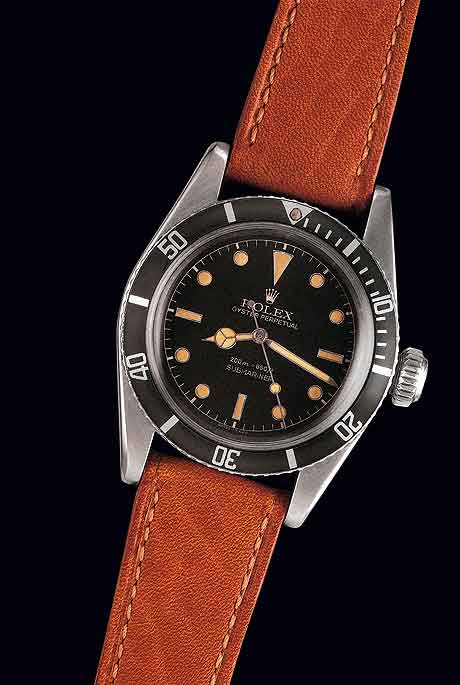
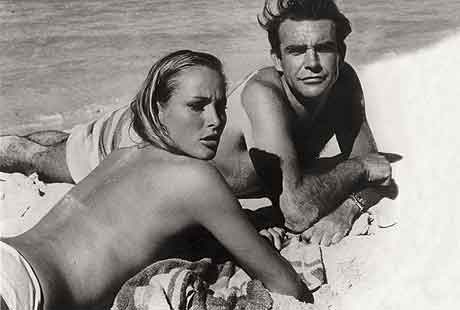
By the time it hit the market, the Submariner had passed rigorous field tests. The Institute for Deep Sea Research in Cannes issued a report on Oct. 26, 1953, on the five months of tests it had conducted with the watch, consisting of 132 dives in depths of 12 to 60 meters. The statement from the laboratory read as follows: “Despite the extremely high salt content of the Mediterranean waters, and the tropical temperature and humidity to which the watch was exposed between the individual dives, it showed no corrosion at all. …Likewise, no moisture was detected within the watch. All other previous tests with water-resistant watches from top brands showed water penetration from the first moment of the dive, indicated by the condensation that formed on the inner surface of the crystal. The watch was worn multiple times during dives with an extended crown (i.e., the crown was pulled out to the position for setting the hands). To conclude these tests, the watch was attached to a thin cord and dropped to a depth of 120 meters – twice as deep as 60 meters, the maximum depth achievable with self-contained compressed air equipment. No leaks were detected even after a one-hour period at this depth.”
Rolex had consulted a number of experts while developing the watch. Jeanneret offered many ideas for the outer design of the case, dial and rotating bezel (which at that time still turned in both directions) for underwater reading of the remaining time of the dive.
In 1959, the first Submariner with a crown guard (Ref. 5512) was introduced. The crown guard gave the watch the distinctive shape we now associate with the Submariner.
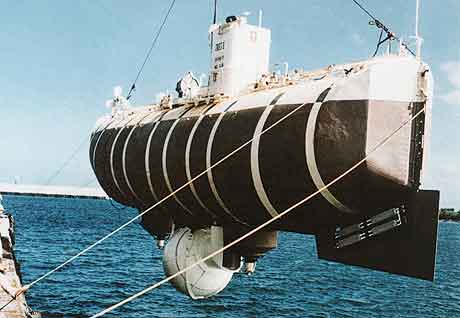
The launch coincided with another impressive Rolex diving feat. On Jan. 23, 1960, the submarine Trieste, with its 2-meter-wide pressure sphere, big enough to hold two people, descended for the 65th time into the depths – this time with the goal of reaching the Challenger Deep in the Mariana Trench, the deepest point in the ocean. Inside the pressure sphere were Piccard’s son, Jacques Piccard, and the American Marine lieutenant Dan Walsh. Outside the sphere was a very special Rolex prototype, a watch, with Oyster case, designed to withstand the pressure of the 10,916-meter descent, which exerted a pressure on the vessel of about 1,125 kg/cm. The idea, of course, was to prove that the Oyster case could survive the ordeal.
Excitement was great when the sphere resurfaced after its triumphant dive. How would the watch look? Would the hands still show the correct time? Just as with the 1953 Bathyscaphe dive, the Rolex emerged unscathed. It looked and ran exactly as it had above the water.
Later that decade, Rolex introduced a new dive-watch feature. It was designed to solve a problem that had emerged as a result of the introduction into professional diving of breathing gases that blended oxygen and helium. These gases enabled divers to descend deeper than before. But divers who wore their watches in decompression chambers filled with the new gas mixture often faced a rude surprise. Helium molecules penetrated the watch crystals and seals and entered the watch cases, and when the pressure in the chamber was reduced during decompression, the helium gas that had built up inside the watch was unable to escape quickly enough, so the watch crystal popped off the watch like a Champagne cork.
Among the divers using these new gas mixtures were those employed by the French company Compagnie Maritime d’Expertise (Comex). Comex worked with Rolex to find a solution to the popping-crystal dilemma and in 1967 Rolex patented a valve that allowed the dangerous buildup of gas to escape easily. At first Rolex used the valve in standard Submariner models (Ref. 5513). A modified version was produced in Geneva solely for Comex. It bore the Comex name on the dial and a special identification number on the back. The second signed Comex series was given its own unique reference number, 5514.
